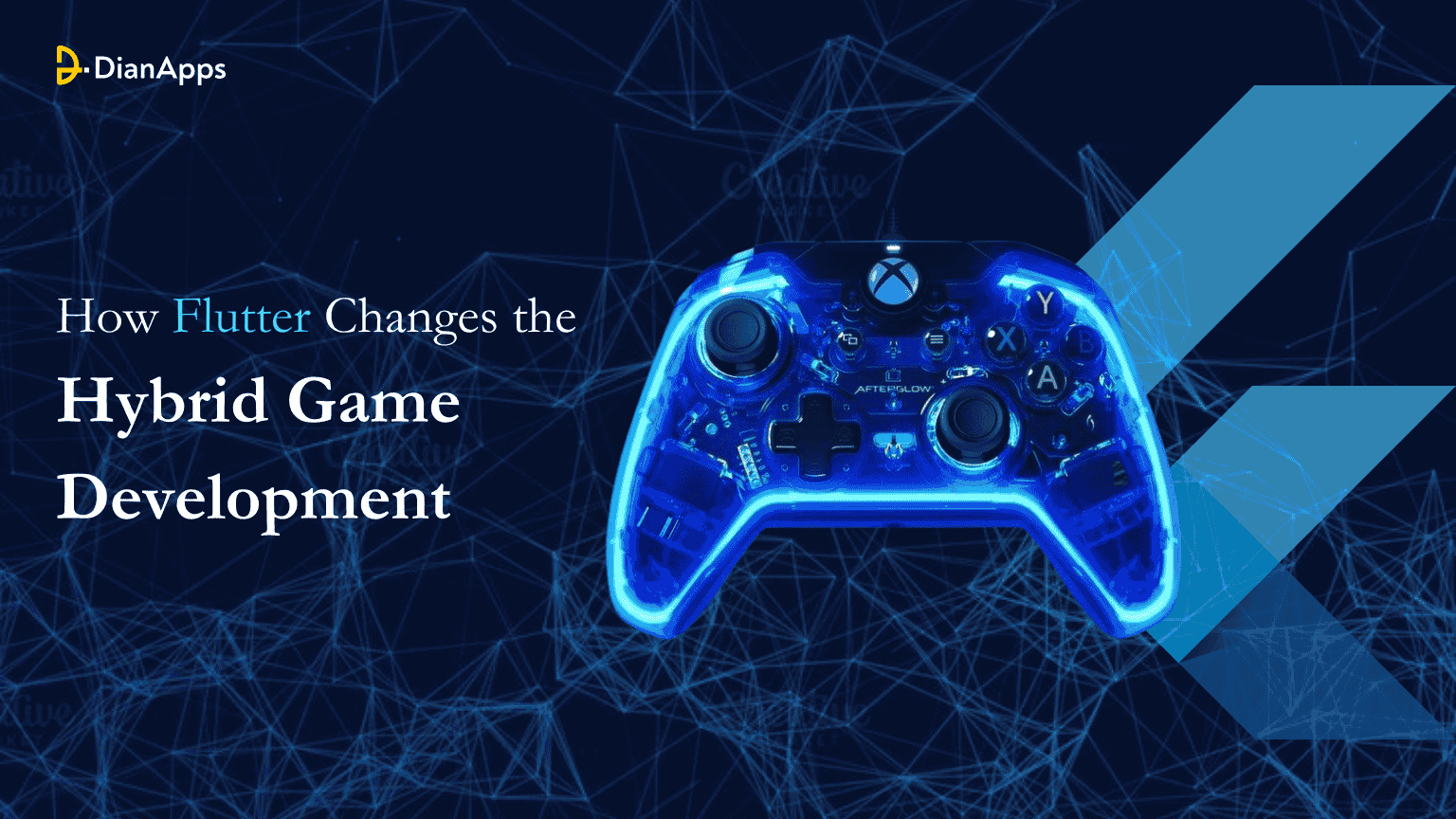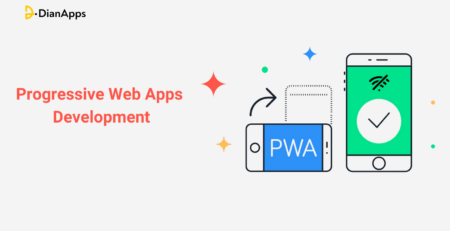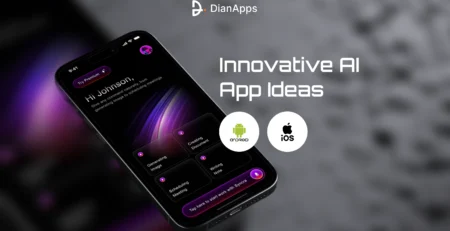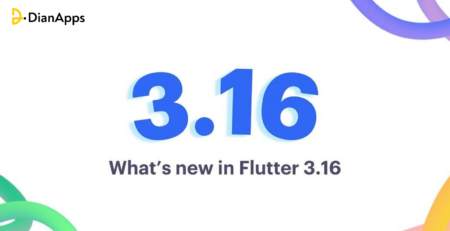How Flutter Changes the Hybrid Game Development?
What if you could build a visually stunning, high-performance game that works seamlessly across platforms—all without the headaches of traditional hybrid frameworks?
In the fast-paced world of game development, developers are constantly juggling between delivering immersive experiences and ensuring their games perform consistently on various devices.
Hybrid game development promised to bridge this gap, but it often fell short due to performance hiccups, design inconsistencies, and complex workflows.
Enter Flutter, a game-changing framework initially celebrated for its app development capabilities, is now a disruptive force in hybrid game development.
With its cutting-edge features like the Skia graphics engine, hot reload, and Dart’s unparalleled efficiency, Flutter is redefining how games are designed, built, and delivered.
This blog delves into how Flutter is not just changing the game—but creating a whole new playbook for hybrid game development. Let’s explore how it’s paving the way for developers to craft next-gen phone game app experiences like never before.
Hybrid Game Development in Focus
To understand why Flutter is making waves in hybrid game development, let’s take a closer look at some eye-opening statistics that reveal the state of the gaming industry and the growing demand for cross-platform solutions:
- The gaming industry is expected to reach a whopping $320 billion by 2026, with mobile games accounting for nearly 50% of the market share. This indicates a massive opportunity for frameworks that can deliver seamless experiences across devices.
- Over 60% of gamers play on multiple platforms, including mobile, desktop, and web. Hybrid development frameworks have become a necessity to cater to this diverse user base.
- According to Google Trends, Flutter adoption has grown by over 200% in the past three years, with developers increasingly exploring its potential beyond apps, including game development.
- The Dart language, which powers Flutter, has proven to be twice as fast as JavaScript in certain scenarios, making it an ideal choice for games that require real-time rendering and minimal latency.
- A survey by Stack Overflow revealed that developers using Flutter report up to a 40% reduction in development time, thanks to its hot reload feature—a game-changer for iterative game development.
These numbers aren’t just trends; they’re a clear indication of why developers and studios are looking to frameworks like Flutter to overcome the limitations of traditional hybrid development and meet the growing demands of a dynamic gaming audience.
Read the comprehensive guide on making a game app for your business!
The Growing Demand for Hybrid Game Development
Hybrid game development is no longer just an option—it’s becoming the industry standard for modern game development. With the gaming audience spread across multiple platforms like mobile, desktop, and web, developers are under immense pressure to create games that offer consistent performance and exceptional user experiences, regardless of the device being used.
1. The Multi-Platform Gaming Revolution
Gone are the days when gamers stuck to a single platform. Today, over 60% of gamers interact with games on more than one device. Whether it’s playing on a smartphone during commutes or switching to a PC or console for an immersive experience, players expect seamless transitions and consistent quality across platforms. Hybrid game development is perfectly suited to meet these demands, enabling developers to use a single codebase to target multiple platforms efficiently.
2. Rising Expectations from Gamers
The modern gamer demands high-quality graphics, faster load times, and smoother gameplay—even in hybrid games. With advancements in device hardware and connectivity, anything less than a flawless gaming experience leads to user dissatisfaction. This has pushed developers to seek frameworks that can deliver near-native performance while reducing time-to-market.
3. Cost-Effectiveness for Studios
Developing separate native applications for each platform is time-consuming and expensive. For small and mid-sized game studios, this isn’t always feasible. Hybrid development frameworks offer a cost-effective solution by enabling developers to write code once and deploy it across platforms, cutting costs without compromising quality.
Read the cost of mobile game app development with the help of this guide!
4. The Need for Rapid Prototyping
Gaming is a fiercely competitive industry where innovation is key. Developers need to experiment, prototype, and iterate faster than ever. Hybrid frameworks simplify the prototyping process, allowing teams to focus on refining gameplay mechanics rather than juggling multiple platform-specific codes.
5. Industry Trends Favoring Hybrid Models
Tech giants and game studios alike are increasingly adopting hybrid development strategies. The growing availability of cloud gaming services and the popularity of subscription-based gaming platforms also favor cross-platform compatibility, making hybrid frameworks a practical choice for future-ready game development.
The rising demand for hybrid game development isn’t just a trend—it’s a necessity. In this evolving landscape, frameworks like Flutter are stepping in to revolutionize how games are built, bridging the gap between cost-efficiency and high-quality user experiences.
Flutter’s Unique Proposition in Hybrid Game Development
Flutter stands out in hybrid game development by combining unparalleled visual capabilities with performance-driven architecture.
Powered by the Skia Graphics Engine, it enables stunning, native-like rendering for immersive game visuals across platforms. Its hot reload feature accelerates development by allowing real-time changes, while Dart’s fast execution ensures minimal latency—critical for gaming.
Unlike traditional frameworks, Flutter’s widget-based architecture simplifies the creation of dynamic, interactive UIs tailored to gaming environments.
With a single codebase supporting mobile, web, and desktop, Flutter offers an efficient, cost-effective solution for developers aiming to craft high-quality, cross-platform games without compromising performance or aesthetics.
Continue reading why are businesses adopting Hybrid app development in 2025!
New Possibilities with Flutter in Game Development
Flutter is unlocking exciting new avenues in hybrid game development, redefining what’s possible for developers:
Enhanced Visuals with Skia Graphics Engine
Flutter’s Skia Graphics Engine allows developers to create stunning, high-performance visuals with seamless transitions and smooth animations. This capability is essential for games that require dynamic effects and lifelike graphics across devices.
Cross-Platform Gaming on Steroids
With Flutter, developers can deploy games on mobile, desktop, and web platforms using a single codebase. This drastically reduces development time and ensures consistent performance, making it ideal for cross-platform gaming.
Simplified Game Mechanics with Widgets
Flutter’s modular widget-based architecture simplifies the implementation of complex game mechanics, such as interactive menus, player controls, and in-game animations, enabling developers to focus more on creativity and less on technical challenges.
Real-Time Collaboration and Prototyping
Flutter’s hot reload empowers developers to make real-time adjustments to game designs and mechanics, streamlining prototyping and facilitating faster iteration cycles. This feature is a game-changer for teams working on tight deadlines.
AR and VR Integration
Flutter’s growing ecosystem of plugins and packages paves the way for integrating Augmented Reality (AR) and Virtual Reality (VR) elements into hybrid games. This opens up opportunities for developers to create immersive, next-gen gaming experiences.
Optimized for Lightweight Games
Flutter’s efficient use of resources makes it perfect for developing lightweight games that deliver rich experiences without taxing device hardware. Indie developers, in particular, can benefit from this efficiency to launch innovative games on a budget.
Flutter is not just a tool for building games—it’s a platform for innovation, offering developers the flexibility, efficiency, and capabilities to bring their boldest ideas to life.
If are looking to build a next-gen casual game app using Flutter! Go ahead, here’s your chance to know the steps!
Developer-Centric Features that Transform Game Development
Flutter’s developer-centric approach eliminates many traditional hurdles of game development, empowering creators to focus on delivering immersive gaming experiences with efficiency and confidence.
Hot Reload for Faster Iteration
Flutter’s hot reload feature lets developers see changes in real time without restarting the app. This drastically speeds up debugging and iterative design processes, allowing game developers to fine-tune gameplay mechanics and visuals with unmatched efficiency.
Customizable Widgets for Game Interfaces
With its extensive library of customizable widgets, Flutter enables developers to create dynamic, interactive game interfaces. From intuitive menus to immersive in-game controls, Flutter’s widgets simplify the process of building polished, user-friendly UIs.
Dart for High-Performance Code
Powered by the Dart programming language, Flutter delivers fast execution speeds and low latency. Dart’s ahead-of-time (AOT) compilation ensures smoother gameplay and responsive interactions—essential for performance-critical games.
Cross-Platform Support from Day One
Flutter’s ability to compile a single codebase for multiple platforms (mobile, web, desktop) saves time and effort. Developers can focus on enhancing gameplay rather than worrying about platform-specific challenges.
Rich Ecosystem of Plugins and Tools
Flutter’s plugin ecosystem provides developers with ready-made tools for integrating features like animations, sound effects, and multiplayer functionalities. This reduces dependency on external libraries and speeds up the overall development process.
Pixel-Perfect Rendering with Skia
The Skia Graphics Engine allows developers to achieve consistent, pixel-perfect rendering across devices, ensuring that games look stunning and perform flawlessly, whether on a smartphone or a desktop.
Open-Source Community Support
Being open-source, Flutter has a robust community of developers contributing plugins, solutions, and innovations. This collaborative environment accelerates problem-solving and encourages knowledge sharing, enabling even smaller teams to deliver high-quality games.
Addressing Skepticism: Flutter vs Established Game Engines
While Flutter is rapidly gaining traction in hybrid game development, it still faces skepticism when compared to established game engines like Unity, Unreal Engine, and Godot.
These engines have long been the go-to solutions for game developers, offering highly specialized tools and features tailored for creating AAA titles, complex game mechanics, and highly optimized performances.
However, Flutter presents a compelling alternative, particularly for developers seeking cross-platform solutions and more streamlined workflows. To better understand the advantages and limitations of each, let’s explore how Flutter stacks up against these established engines.
1. Performance: Native vs Hybrid Execution
Established game engines like Unity and Unreal Engine are known for their high-performance capabilities, particularly when it comes to handling complex graphics, physics, and 3D environments. These engines are optimized for intensive gameplay and are used in AAA game development, offering built-in tools for realistic rendering, lighting, and environment effects.
Flutter, on the other hand, is designed primarily for mobile and web applications, with its primary strength lying in 2D rendering. While it uses the powerful Skia Graphics Engine, which enables smooth graphics rendering, its performance may not match the raw power of Unity or Unreal in handling resource-intensive 3D games or high-end visual effects.
For developers building lightweight, 2D games or less graphics-intensive experiences, Flutter offers an efficient solution, but it may struggle with high-end 3D gaming scenarios.
2. Development Speed: Speed vs Specialized Features
One of Flutter’s standout features is its rapid development cycle, thanks to features like hot reload and a unified codebase for iOS, Android, and website development services.
This means developers can iterate quickly, make real-time changes, and reduce development time significantly.
On the flip side, Unity and Unreal Engine offer highly specialized tools and assets for game development. They provide vast libraries of assets, prefabricated templates, and a comprehensive suite of features for optimizing 3D graphics, physics engines, and game behaviors.
While Flutter is great for fast prototyping, Unity and Unreal shine when it comes to the detailed, highly specific needs of game design, including AI scripting, complex physics engines, and 3D modeling.
However, Flutter’s customizable widgets and UI components make it exceptionally efficient for developing the front-end of a game, especially for mobile and casual games.
For developers focused on user interaction, visuals, and general gameplay logic rather than intensive 3D simulation, Flutter provides a great speed advantage.
3. Cross-Platform Support: Universal Codebase vs Specialized Engines
Flutter’s core strength lies in its cross-platform support—developers can write a single codebase that runs across iOS, Android, web, and even desktop platforms.
This unified approach allows developers to save considerable time and effort when targeting multiple platforms, a feature that has positioned Flutter as a revolutionary framework for app development.
In comparison, traditional game engines like Unity and Unreal Engine excel in platform-specific performance optimization.
Unity, for instance, has been a dominant force in mobile game development for years, with built-in support for Android, iOS, and even consoles like the Nintendo Switch. Unreal Engine, while typically associated with AAA games, also supports multiple platforms but tends to focus more on high-end performance, making it less suitable for simpler, lightweight games.
While Unity and Unreal support cross-platform development, their workflows are inherently more complex, often requiring platform-specific adjustments or optimizations.
Flutter’s simplicity in handling cross-platform deployments gives it a distinct advantage for developers who prioritize efficiency and speed over specialized performance optimization.
Don’t have coding experience? Yet are passionate about making a gaming app. We have a perfect solution for you to get started!
4. Ecosystem and Asset Store: Customization vs Library-Driven Development
Both Unity and Unreal Engine offer vast asset stores that provide pre-built models, textures, sound effects, and scripts that developers can purchase or freely use. This extensive library allows developers to quickly find and implement the assets they need, speeding up the game creation process and reducing the need for custom asset creation.
Flutter, as an open-source framework, does not have a dedicated game asset marketplace like those offered by traditional game engines.
However, it does have an expanding ecosystem of plugins and packages designed for game development, ranging from audio to motion graphics.
While the selection is not as extensive or tailored to gaming needs as the Unity or Unreal asset stores, it is growing steadily and can be highly useful for simpler games or rapid prototyping.
For larger, more complex games requiring specialized assets, Unity and Unreal’s asset stores provide a significant advantage. For smaller or more experimental games, however, Flutter’s flexibility and ability to quickly integrate community-driven tools can be a big asset.
5. Game Genres and Suitability: Casual Games vs AAA Titles
The distinction between the types of games suited for Flutter versus Unity or Unreal Engine becomes clearer when we look at game genres.
Flutter excels in 2D casual games, interactive storytelling, and simple mobile or web-based games. Its easy-to-use framework and fast iteration cycle make it ideal for indie developers and teams focusing on mobile-first, engaging gaming experiences with rich interfaces.
On the other hand, Unity and Unreal Engine are designed for complex game genres such as 3D action games, first-person shooters, and open-world games.
These engines are optimized for the processing power required to handle complex simulations, large environments, and high-definition graphics, which Flutter is not built to manage at scale.
For developers targeting casual gaming audiences with puzzle games, platformers, or strategy games, Flutter presents an attractive and efficient alternative.
However, for developers aspiring to create immersive, high-budget games with expansive worlds, cutting-edge visuals, and sophisticated game mechanics, Unity and Unreal Engine remain the go-to tools.
6. Community and Support: Specialized vs Generalized Resources
Both Flutter and established game engines have vast developer communities, but the type of support they offer differs. Unity and Unreal Engine communities are full of highly experienced game developers who can offer specialized insights into advanced game mechanics, optimization, and rendering techniques.
The wealth of tutorials, documentation, and support resources makes it easier to tackle complex game development challenges.
Flutter’s community, while growing rapidly, is more general in nature, focused on mobile and app development rather than specialized game design.
However, as Flutter’s presence in game development increases, its community is beginning to contribute more targeted solutions for gaming use cases.
Case Studies: Games Built with Flutter
Flutter’s potential in game development has been explored by several developers looking for efficient, cross-platform solutions.
While it’s still emerging as a go-to platform for game development, some exciting projects demonstrate its versatility and capabilities in creating engaging gaming experiences. Here are a few notable case studies that highlight how Flutter is being used in the gaming industry:
1. FlutterShot: A Simple, Fun 2D Game
FlutterShot is a 2D shooting game built entirely using Flutter. The game is designed with simple mechanics: the player controls a character shooting targets while avoiding obstacles. Developed by an indie team, FlutterShot showcases the potential of Flutter for creating lightweight, fun mobile games.
Key Highlights:
- Cross-platform deployment: The game runs seamlessly on both iOS and Android, demonstrating Flutter’s ability to handle cross-platform performance efficiently.
- Smooth animations: The game’s smooth animations and intuitive controls are powered by Flutter’s widget-based UI system.
- Rapid development cycle: The developers were able to iterate quickly using Flutter’s hot reload feature, making adjustments to gameplay and visuals in real time.
This case study shows how Flutter is suitable for building 2D mobile games with minimal resource consumption and optimal performance across platforms.
2. 2048 Game Clone: Puzzle Game with Flutter
A popular puzzle game clone of the iconic 2048 was developed using Flutter. To explore its potential for creating simple yet addictive games. The 2048 game clone includes familiar swipe mechanics, tile merging, and a clean, minimalistic user interface.
Key Highlights:
- Smooth gameplay and responsiveness: Flutter’s ability to render pixel-perfect graphics using the Skia Graphics Engine ensures the game performs smoothly, even on low-end devices.
- Unified codebase: The game is available on both Android and iOS, utilizing a single codebase, which drastically reduces development time.
- Customization: The game can be easily modified with different themes and level structures, showing how Flutter can handle dynamic gameplay changes efficiently.
This case study demonstrates that Flutter excels in building puzzle games. And other 2D games, offering a smooth development process. And reliable performance across various devices.
3. Bitizens City Builder Game
Bitizens is a city-building game where players manage a growing metropolis. Built using Flutter, this mobile game focuses on creating an engaging simulation experience with vibrant graphics and complex gameplay mechanics.
Key Highlights:
- Cross-platform development: Flutter allows the game to run on both iOS and Android with a unified codebase, providing players with a seamless experience across devices.
- Interactive UI: Flutter’s widget system enables the developers to create interactive and immersive UI components that allow players to navigate through complex city-building mechanics easily.
- Fast prototyping: The developers were able to test new features, animations, and interactions quickly through Flutter’s hot reload, allowing them to refine and optimize the user experience in real time.
Bitizens shows that Flutter can handle more complex gameplay than simple 2D games. Allowing developers to build feature-rich and interactive mobile games with engaging UIs.
4. Rive Animation Game
The Rive animation platform, which allows developers to create interactive animations. Was used to build a game incorporating dynamic animations and complex interactive elements. Built with Flutter, the game is a creative showcase of how Flutter can integrate with external tools. To create stunning game visuals.
Key Highlights:
- Integration with Rive for animations: The game’s intricate animations, which react to user inputs and evolve as the game progresses, are powered by Rive. And integrated into the Flutter codebase, showcasing Flutter’s ability to handle high-quality animations and interactivity.
- Cross-platform compatibility: The game works seamlessly on both Android and iOS platforms, delivering consistent performance with rich visual effects.
- Rapid development and testing: The use of Rive in conjunction with Flutter allowed the developers to experiment with animation-driven gameplay features and iterate quickly.
This case study highlights how Flutter can integrate with other platforms. Such as Rive, to enhance visual fidelity and animation quality in game development. Opening up new possibilities for creative game designs.
5. Flutter Run by Google
Flutter Run, created by the Google team, is an experimental game designed to showcase Flutter’s capabilities in a game development context. The game is a fun and engaging runner game where players guide a character through obstacles.
Key Highlights:
- Open-source project: Flutter Run was developed as an open-source project. And it serves as a reference for developers exploring how to use Flutter for game development.
- Gameplay mechanics: The game’s simple yet engaging mechanics, including character movement, jumping, and obstacle avoidance.
- Platform versatility: The game works seamlessly across both iOS and Android, proving that Flutter can handle simple. Engaging games that target multiple platforms with minimal development effort.
As an experimental project, Flutter Run serves as a foundational example of Flutter’s potential. In mobile game development services, particularly for casual, 2D games with straightforward mechanics.
Future of Hybrid Game Development with Flutter
The future of hybrid game development with Flutter app development services is bright, with the framework poised to redefine how games are developed across platforms.
While it may not replace high-end engines like Unity for 3D games. Flutter’s cross-platform capabilities, rapid development cycle, and developer-friendly features make it ideal for 2D and casual games.
As the community grows and more resources become available. Developers will find it even easier to create interactive, engaging games that perform well on both iOS and Android.
With its expanding ecosystem, Flutter is set to become a key player in the future of mobile game development. Offering new opportunities for creativity and efficiency.
Ready to explore the potential of Flutter in your next game project? Reach out to us today and bring your ideas to life with the power of Flutter!




